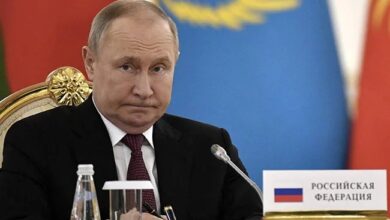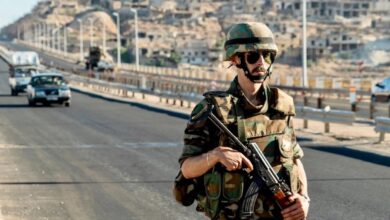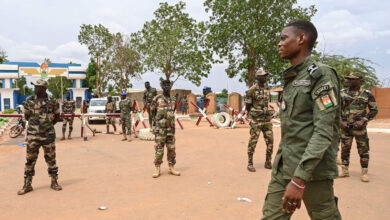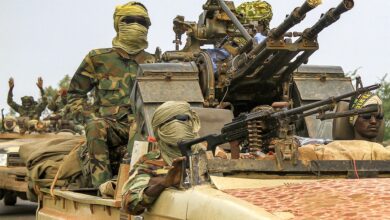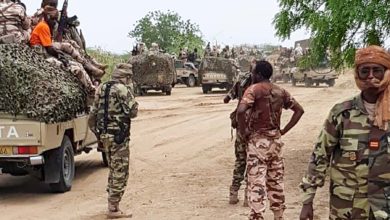
On January 30, Pakistan’s hard-won peace crumbled when a suicide attack at a Peshawar mosque claimed the lives of over 100 people, mainly police officers.
Before the attack, the capital Islamabad was rattled by a suicide bombing, the first in eight years, which killed one police officer.
These tragedies not only signify how successful the “Zarb-e-Azb” (2014-2017) military operation was in crippling the Tehreek-e-Taliban Pakistan (TTP) but also how the country’s recent policies and actions have allowed a dormant TTP to reemerge.
TTP Resurgence: The Example of Swat
Despite clear warning signs of the TTP’s emergence in Swat, a district the military liberated from the militants in 2009, the weak government has failed to act.
In Swat, some 125 miles (200 kilometers) north of the capital, the TTP has resorted to blackmail and extortion of local elites and politicians. To prove these were not empty threats, the TTP attacked a school van, killing the driver and injuring two students.
Although Pakistan’s military initially asserted that the TTP’s presence in Swat was overstated, the escalating incidents forced the military to reexamine its claims.
Most recently, the TTP has conducted brazen attacks on police and security infrastructure in urban centers. In February, the TTP attacked the Karachi Police Office, killing four security personnel and one civilian. In December, a TTP-led hostage situation in Bannu’s Counter-Terrorism Department stunned the country.
This surge in attacks poses an important question. What allowed a crippled TTP to resurface after the successes of military counter-insurgency operations, especially Zarb-e-Azb?

Taliban Takeover in Afghanistan
Optimistically, the Pakistani government and military greatly aided the US exit, hoping the Taliban government would be sympathetic to their counter-terrorism cause. Their sanguinity was misplaced.
Despite repeated affirmations by the Afghan Taliban that it would not allow Afghan territory to be used by terrorist groups, this promise has not been fulfilled. Even worse, after the Taliban’s takeover of Afghanistan, Pakistan has witnessed a 51 percent increase in terror attacks.
Cross-border fire and clashes on the Durand Line (the international border) are rising, and so is the cross-border blame game. Severe schisms mark diplomatic relations, with government spokespersons regularly launching diatribes against one another.
Pakistan claims that the Taliban has taken no serious action against militant groups on its soil except for ISIS. Meanwhile, the Taliban claims attacks on Pakistan are planned and executed indigenously.
Believing the Taliban is allowing TTP strongholds to flourish, Pakistan has resorted to alleged airstrikes on Afghan territory housing such bases, fueling dismay and animosity among Afghans.
Furthermore, the Pakistan military’s fencing of the Durand Line to curb cross-border terrorism has also been a major source of tension. The Taliban does not recognize the border and considers fencing it unilateral action, taking down fencing in some areas.
Such political chaos is an incubator for terror groups such as the TTP.
Peace Negotiations With the TTP
When prime minister Imran Khan was in power (2018-2022), he negotiated with the TTP, which proved unwise and politically embarrassing.
While his proponents reasoned that this approach was taken to appease the Taliban government and disarm the TTP, it has resulted in unintended fallout, echoing previous peace attempts.
If not handled tactfully, peace negotiations with militant groups tend to collapse, as was regularly seen with the Tamil Tigers in Sri Lanka. Critics of the peace talks argued that negotiating with the TTP – known for even killing children in schools – was untenable.
Although the Afghan Taliban mediated negotiations between them, the TTP continued to break ceasefires, raising concerns about its true intentions. Releasing TTP militants as a part of the negotiations also proved a pivotal mistake.
Moreover, outrageous demands, including reversing the merger of tribal areas into the Khyber Pakhtunkhwa Province in the north, hindered tangible progress toward peace.
The negotiations created space for the TTP to regroup and launch a terror campaign across Pakistan. A National Counter-Terrorism Authority document revealed that during the peace talks, the TTP “gained considerable ground; increased its footprint and magnitude of activities.”

Imran Khan’s Ouster
Although it was Khan’s misplaced decision to negotiate with the TTP, his exodus has further reinforced TTP strength.
After his removal, Khan blamed the military establishment, infamous for its political involvement, and the incumbent Pakistan Democratic Movement (PDM) government for his removal. This perception has resonated with the population, resulting in a polarized political landscape unseen in recent history.
The PDM and Pakistani military overlooked the TTP’s initial emergence because they were embroiled in a political tug-of-war with Khan as well as a looming economic emergency.
Since the PDM government took over in April 2022, the already weak economy has worsened. Inflation is skyrocketing, and the rupee is rapidly depreciating. Foreign exchange reserves are also critically low, indicating a potential economic default.
Trapped in this political and economic quagmire, the PDM has found itself unwilling and unable to counter the TTP.
Akin to the PDM, Pakistan’s voracious mainstream media primarily focuses on covering political rivalry, failing to adequately report on the TTP’s strong resurgence. Even when residents of Swat rang alarm bells, the mainstream media was lethargic in its reporting until the problem reached crisis levels.
A Daunting Challenge
Due to Pakistan’s mismanagement, short-sighted policies, miscalculations, and elements beyond its control, terrorism is once more on the ascent.
The TTP has been afforded ample room to return as a boogeyman due to the Taliban’s takeover in Afghanistan, Imran Khan’s misplaced negotiations, and then his ouster.
Whether this TTP comeback is a short-term fright or a long-term crisis depends on the government and military response. However, responding to even a small-scale insurgency will drain the country’s already inadequate resources.
The coalition government is incompetent (and viewed by many as corrupt), while the military’s morale has fallen precipitously due to its recent loss of popularity. Facing a TTP resurgence while grappling with a far-from-desirable political and economic environment will be a tough challenge for the country and its military.
 Sarmad Ishfaq is a researcher and writer whose work has been published by The Diplomat, Harvard Kennedy School Review, Open Democracy, Paradigm Shift, and Eurasia Review, to name a few.
Sarmad Ishfaq is a researcher and writer whose work has been published by The Diplomat, Harvard Kennedy School Review, Open Democracy, Paradigm Shift, and Eurasia Review, to name a few.
He has also been published in several international peer-reviewed journals, such as Taylor and Francis’ Social Identities.
Before becoming an independent researcher/writer, he worked as a research fellow for the Lahore Center for Peace Research as well as the Pakistan military’s media wing, the ISPR.
He has a master’s degree in International Relations from the University of Wollongong in Dubai, where he was recognized as the Top Graduate.
Disclaimer: The views and opinions expressed here are those of the author and do not necessarily reflect the editorial position of The Defense Post.
The Defense Post aims to publish a wide range of high-quality opinion and analysis from a diverse array of people – do you want to send us yours? Click here to submit an op-ed.





